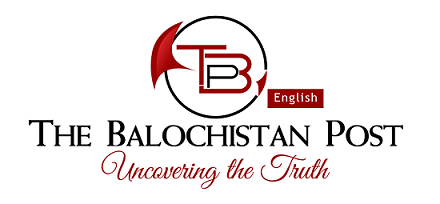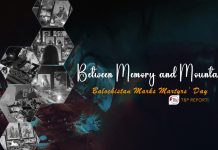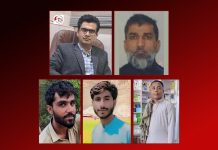Author: Salman Qalandrani Baloch
The Ancient city “Mehrgarh” is one of the ancient Civilizations of the world. In native Balochi, the word “Mehrgarh” has a beautiful meaning, with “Mehr” standing for love and “Garh” for heaven or place of rest. “Mehrgarh” is located on the Kachii plain of Balochistan, close to the Bolan Pass, to the west of the Indus River and between Balochistan’s cities of Quetta (Shaal), Sibi, and Kalat. Approximately 26 km from the renowned city of Sibi in Balochistan and just 10 km from the town of Dahdar, lies the ancient settlement of Mehrgarh, a groundbreaking archaeological discovery. This discovery has established Balochistan as the cradle of the oldest civilization on the earth. Balochistan is generally referred to as the “Cradle of Civilizations”. From 1976 to 2005, French archaeologists, Mr. Jean-Francois Jarrige and his wife Catherine Jarrige, made groundbreaking discoveries at Mehrgarh, declaring it the epicenter of the world’s oldest civilization.
Around 9000 BC, the ancient settlement of Mehrgarh flourished in Balochistan, laying the groundwork for subsequent human settlements in the region, as well as in Sindh and Punjab. In fact, Mehrgarh marks the genesis of the Indus Valley civilization and the ancient civilization of Balochistan. According to historians and researchers, Mehrgarh was among the first hubs of human population, dating back thousands of years to the Neolithic era. These settlements played a pivotal role in the development of human civilization, making Balochistan a cradle of ancient cultures and a treasure trove of archaeological riches. The inhabitants of Mehrgarh were not only the pioneers of this region but also of the ancient culture and civilization of the entire South Asia. They laid the foundation for the development of human settlements, farming, herding, and metallurgy, which later flourished in the Indus Valley civilization and other ancient civilizations of the subcontinent. The people of Mehrgarh were true trailblazers, whose innovations and achievements had a lasting impact on the cultural and social landscape of South Asia. The remains of the population discovered in Mehrgarh were surprisingly from a very advanced civilization that practiced agriculture and also mastered the art of domesticating animals. The site contains thousands of remains of pulses, indicating a sophisticated understanding of legume cultivation. Moreover, in the Mehrgarh region, archaeologists discovered evidence of date palm cultivation dating back to 7,000 BC. Additionally, they found indigenous varieties of barley, wheat, and other grains, including an ancient barley variety cultivated around 8,000 BC. Further excavations revealed that these crops were cultivated as far back as 5,000 years before Christ.
In 1973, a mound was discovered in the Mehrgarh area, initially estimated to be from around 3,000 to 4,000 before Christ. However, subsequent research and excavations in 1974 revealed a network of ancient mounds and small settlements, with evidence suggesting that the settlement was actually 10,000 to 12,000 years old. These permanent settlements gave rise to agriculture, leading to the development of permanent agricultural settlements. Although the inhabitants had not yet learned to use pottery, they began living in mud-brick buildings, marking a significant milestone in human cultivation.
The discovery of two types of barley and four types of wheat among the grains in Mehrgarh indicates that Balochistan was a significant center of grain production in ancient times. Moreover, the ruins of early days (daur-e-awal) yielded a substantial quantity of berries and date palm kernels, suggesting that these fruits were a source of food for them. This finding also implies that they not only consumed fruits but also had knowledge of cultivating plants and trees. In their early days, the people of Mehrgarh hunted wild gazelles, cows, mountain goats, mountain sheep, and other cattle for their meat, leather, and bones. However, over time they became skilled in domesticating sheep and cattle as evident from the bones found at the end of early days (daur-e-awal) in Mehrgarh. Although initial bone piles contained mostly wild animal bones, the presence of domesticated animal and cattle bones in large quantities indicates that Mehrgarh was a sedentary agricultural society. Additionally, they had developed the art of weaving and had begun living a decent and civilized life.
During this period, three professions developed in Mehrgarh: farming, animal husbandry, and hunting. The people of Mehrgarh had a developed burial practice, initially burying their dead in regular graves, often with the deceased’s personal belongings, such as daily tools and ornaments. This suggests that they believed in an afterlife, where the deceased would awaken from a deep sleep and require the necessities of life. The recovered items from Mehrgarh’s graves, including beads, oysters, bones, anklets, and other objects, were intentionally buried with the dead for this purpose. They also discovered stone axes, stone vessels, turquoise and lapis lazuli balls in many graves. The presence of turquoise and lapis lazuli balls, which are not locally available, indicates that Mehrgarh had established trade relations with other regions. This highlights the community’s economic and cultural connections with neighboring areas. They also suggest that Mehrgarh’s trade networks extended to Iran, Central Asia, and Afghanistan. The people of Mehrgarh buried their dead in a seated position, with pots found in every grave. They also discovered full baskets placed in the graves, containing objects like offered as sacrifices and charity. Highly handcrafted beaded ornaments have been found in the houses which indicates their deep connection with the Makran division of Balochistan. The presence of pots and baskets in the graves suggests a belief in providing for the deceased in the afterlife, while the beaded ornaments reveal a high level of craftsmanship and cultural exchange.
A thriving industry for weapons and tools made of flint stone was established in Mehrgarh since these tools were needed by farmers, herdsmen, and hunters across the region. Over 20,000 flint stone pieces were found. The most significant discoveries are the clay sculptures, made from unripe clay, including three human and two animal statues. The human statues likely depict women with pointed noses and are adorned with jewelry indicating:
- The first period of Mehrgarh was influenced by the Madrastri language.
- Their land was revered as a mother figure. And even today, the Baloch people are resisting for their homeland.
- Women were considered symbols of creativity.
- Religion played a significant role in their life, with the worship of Matadevi, the earth goddess.
These clay sculptures offer valuable insights into the beliefs, values, and cultural practices of the people of Mehrgarh during that era. The statues discovered in Mehrgarh are extremely ancient, and no older statues have been found in South Asia. The civilization of Mehrgarh, dating back to the 5th millennium BC, represents the Chalcolithic period. Excavations at the site have yielded pottery, grains, and flint stone tools including various types of wheat and barley grains, as well as cotton seeds. This discovery proves that the people of Mehrgarh cultivated cotton as early as 5000 BC, contradicting the previous belief that cotton was first cultivated in the Indus Valley civilization after 2400 BC. The recovery of cotton seeds from Mehrgarh disproves this theory and establishes that cotton was first cultivated in the Mehrgarh civilization around 5,000 years ago. The civilization engaged in regular trade, importing precious stones and other items from neighboring regions like Iran, Afghanistan, and other regions. Notably, the pottery-making skills they acquired during this period involved creating geometrical patterns on pots in an organized manner. Remarkably, the designs on these pots bear a striking resemblance to Balochi Kashida, a traditional embroidery style still practiced today with the same ancient basic forms.
Unveiling the secrets of an ignored era:
In the vast expanse of the Balochistan region, lies an ignored city that whispers tales of a bygone era. Around 9000 BC, the ancient settlement of Mehrgarh flourished in Balochistan, is a treasure trove of secrets waiting to be uncovered. This ancient city nestled in the Bolan Pass has been shrouded in mystery for centuries, its existence a mere whisper in history. Yet, its ruins hold the key to a fascinating story of people who lived, laughed, and loved in a time long past. The revelation should have ignited a sense of pride and ownership among the people of Balochistan, as they are the rightful heirs to this rich cultural heritage. But unfortunately, today Balochistan stands as a vast archaeological site, containing millions of years of history and imprints that are waiting to be explored and cherished. It has the potential to become the world’s largest pilgrimage site, attracting scholars, researchers, and historians around the globe. Balochistan has received relatively little attention from historians, with only research conducted during the British era and after India’s partition. This limited exploration has merely scratched the surface, leaving much to be discovered and explored in this ancient land.
References:
- “Mehrgarh, Asia ki tehzeeb mein iski aimiath” written by Dr. Farooq Baloch, assistant professor (history).
- Overviews of Mr. Jean-Francois Jerrige on Mehrgarh civilization.
- Prehistorical Balochistan, written by Dr. Shah Muhammad Marri.
Disclaimer: The views and opinions expressed in this article are those of the author and do not necessarily reflect the official policy or position of The Balochistan Post or any of its editors.




























